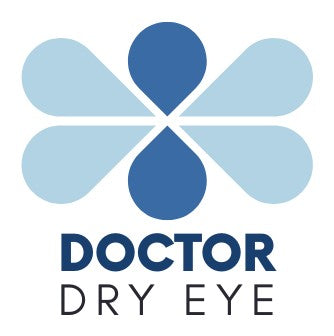Introduction
Punctal plugs are a common treatment for dry eyes that are placed during a routine in-office procedure. They are usually used after first-line treatments, such as artificial tears, warm compresses, and eyelid hygiene.
In this article we'll tell you everything you need to know as a patient about punctal plugs.
What are Punctal Plugs?
Punctal plugs are small devices that are used to manage dry eye syndrome.
Punctal plugs are inserted into the tear ducts, which are the small openings at the inner corner of the eyelids that drain excess tears from the eyes.
How Do Punctal Plugs Work?
Punctal plugs work by blocking the tear ducts, which are the small openings at the inner corner of the eyelids that drain excess tears from the eyes. By blocking these ducts, punctal plugs help to conserve natural tears and keep the eyes moist.
Are There Different Types Of Punctal Plugs?
There are two main types of punctal plugs: temporary and permanent. Let’s discuss in more detail the pros & cons of each.
Temporary / Dissolving Plugs
Temporary punctal plugs are made of dissolvable material that gradually breaks down over time.
Collagen is one of the most common materials for temporary plugs.
These plugs can last several months. They are great for dry eye symptoms that are expected to be short term.
Semi-Permanent Plugs
Semi-permanent plugs are made of durable and long-lasting materials like silicone or acryllic. They are designed to remain in the tear duct permanently. However, they can be removed if needed.
These plugs are sized to fit punctum of different sizes. While these plugs are meant to be “permanent”, they are prone to falling out. It is not surprising to have them replaced after 6-12 months. Your doctor may try a larger size if that happens for a more snug fit.
These plugs can be seen externally by your eye doctor when looking for them under a microscope.
Intracanalicular plugs
These plugs are made of long lasting materials and are inserted deep into the tear duct where it cannot be seen by an eye doctor.
These plugs can come with increased risks if patients change their mind and want them removed.
In some patients with dry eyes, blocking the tear duct results in too many tears, or a wet eye. These intracanalicular plugs can require surgery to remove or lead to other complications.
What Are The Benefits Of Punctal Plugs?
There are several benefits to using punctal plugs, including:
- Dry Eye Relief: Punctal plugs can provide relief for individuals with dry eye syndrome by reducing the drainage of tears and increasing the natural moisture in the eye.
- Long-lasting relief: Punctal plugs can provide long-lasting relief for individuals with dry eye syndrome, as they can remain in the tear ducts for months or even years, depending on the type of plug used.
- Non-invasive: Punctal plugs are a non-invasive treatment option for dry eye syndrome and do not require any surgical intervention.
- Improved comfort: By reducing the drainage of tears and increasing the natural moisture of the eye, punctal plugs can help improve the comfort and quality of life for individuals with dry eye syndrome.
What Are The Risks Of Punctal Plugs?
Punctal plugs are generally considered safe, but as with any medical procedure, there are potential risks and side effects to be aware of. Some of the risks associated with punctal plugs include:
- Over-tearing: In some cases, punctal plugs can cause excessive tearing, which can lead to discomfort and vision problems.
- Infection: There is a small risk of infection associated with the placement of punctal plugs. This can be reduced by proper aftercare and following the instructions provided by your doctor.
- Irritation or inflammation: Some individuals may experience irritation or inflammation at the site of the punctal plug, which can cause discomfort and redness.
- Plug dislodgement or migration: Punctal plugs can become dislodged or migrate from their original position, which can lead to a decreased efficacy of the treatment or the need for reinsertion..
- Allergic reaction: Some individuals may experience an allergic reaction to the material of the punctal plugs, which can cause itching, redness, and swelling.
It is important to discuss these potential risks and any concerns you may have with your doctor before deciding if punctal plugs are right for you. Your doctor will be able to evaluate your specific needs and determine if punctal plugs are a safe and effective option for you.
How are Punctal Plugs Inserted?
The placement of punctal plugs is a simple, in-office procedure that typically takes just a few minutes to complete. The procedure is usually performed under topical anesthesia, meaning that the eye is numbed with eye drops to minimize any discomfort.
You will typically sit in an exam chair with your doctor looking at you under a microscope, though it can be performed with the naked eye. This is doctor preference.
The insertion can take only a minute. If your doctor notices as it’s being placed that the size of the plug is too big or too small, a different size can be selected.
After the procedure, patients may experience some mild discomfort or swelling, but typically there are no bothersome symptoms after their placement. Any mild discomfort typically resolves within a few days.
Who Are Good Patients For Punctal Plugs?
Punctal plugs are often recommended for individuals who suffer from dry eye syndrome, a condition in which the eyes do not produce enough natural tears to keep them moist and comfortable. Some specific groups of people who may be good candidates for punctal plugs include:
- Dry Eye Syndrome Patients Who Have Tried First-Line Treatments: If you experience symptoms such as redness, itching, burning, or discomfort due to dry eye syndrome, punctal plugs may be a good option for you.
- Dry Eyes From Contacts: Contact lens wear can lead to dry eye syndrome, and punctal plugs can help increase the natural moisture of the eye and reduce discomfort for individuals who wear contacts.
- Dryness Following Eye Surgery: Certain eye surgeries can lead to temporary irritation of the surface of the eye. Keeping the eyes extra lubricated during this post-operative recovery period can lead to increased comfort and less irritation.
- Symptoms From Certain Medications: Certain medications, such as antihistamines and antidepressants, can cause dry eye syndrome, and punctal plugs may be an effective treatment option for individuals who take these medications.
- Increased Screen Time: Spending a lot of time looking at screens can lead to eye strain and dry eye syndrome, and punctal plugs may help reduce discomfort and improve the natural moisture of the eye.
It is important to keep in mind that not all individuals with dry eye syndrome are good candidates for punctal plugs, and your doctor will be able to determine if they are a good option for you based on your specific needs and medical history.
Can Punctal Plugs Be Removed?
Let’s consider each type of plug:
Temporary dissolvable plugs don’t need to be removed, because they dissolve away. Because of their location they typically cannot be removed. So if you have symptoms of excessive tear, you may need to deal with them until the plug dissolves.
Semi-permanent plugs can be removed. It takes only a few seconds, but must be done by a doctor.
Intracanalicular plugs can be the most challenging to remove. Talk to your specialist about these. While they are “supposed” to be easy to remove, because they can’t be seen, their removal can become more complicated.
Alternative Treatments To Punctal Plugs
Punctal plugs are not the only option available for dry eyes. Some alternative treatments for dry eyes include:
- Artificial tears: Over-the-counter artificial tears can help lubricate the eyes and provide relief for dry eye symptoms.
- Omega-3 supplements: Omega-3 fatty acids have been shown to have a positive impact on dry eye symptoms and may be taken as a dietary supplement.
- Prescription eye drops: Prescription eye drops, such as Restasis, can help increase tear production and provide relief for dry eye symptoms.
- Warm compresses: Applying a warm compress to the eyes can help improve tear production and provide relief for dry eye symptoms.
- Lifestyle changes: Making changes to your lifestyle, such as reducing screen time and avoiding environmental irritants, can help reduce dry eye symptoms.
- Surgery: In some cases, surgery may be necessary to treat dry eye syndrome. For example, surgical procedures, such as punctal occlusion, can be performed to permanently close the tear ducts and prevent tear drainage.
It is important to keep in mind that the best treatment for dry eye syndrome will vary from person to person and will depend on the underlying cause of the condition. Your doctor will be able to determine the best treatment plan for you based on your specific needs and medical history.
Summary
Punctal plugs can be an effective treatment option for many people with dry eye syndrome, helping to relieve symptoms such as itching, burning, and fatigue. However, they are not appropriate for everyone, and it is important to discuss your specific needs and medical history with your eye doctor to determine if punctal plugs are the right choice for you.
In conclusion, punctal plugs are small devices that can help manage dry eye syndrome by blocking the tear ducts and conserving natural tears. If you are experiencing symptoms of dry eye, it is important to discuss your treatment options with your eye doctor to determine if punctal plugs may be an effective solution for you.



